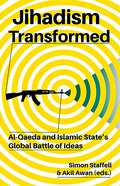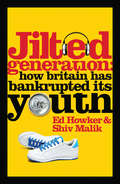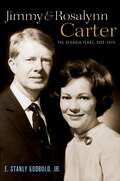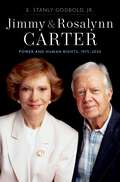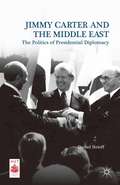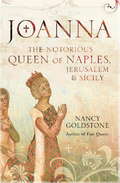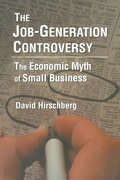- Table View
- List View
Jihadism Transformed: Al-Qaeda and Islamic State's Global Battle of Ideas
Jihadist narratives have evolved dramatically over the past five years, driven by momentous events in the Middle East and beyond; the death of bin Laden; the rise and ultimate failure of the Arab Spring; and most notably, the rise of the so-called Islamic State. For many years, al-Qaeda pointed to an aspirational future Caliphate as their utopian end goal - one which allowed them to justify their violent excesses in the here and now. Islamic State turned that aspiration into a dystopic reality, and in the process hijacked the jihadist narrative, breathing new life into the global Salafi-Jihadi movement. Despite air-strikes from above, and local disillusionment from below, the new caliphate has stubbornly persisted and has been at the heart of ISIS's growing global appeal. This timely collection of essays examines how jihadist narratives have changed globally, adapting to these turbulent circumstances. Area and thematic specialists consider transitions inside the Middle East and North Africa as well as in South Asia, sub-Saharan Africa and Europe. As these analyses demonstrate, the success of the ISIS narrative has been as much about resonance with local contexts, as it has been about the appeal of the global idea of a tangible and realised caliphate.
Jihadist Infiltration of Migrant Flows to Europe: Perpetrators, Modus Operandi and Policy Implications
by Sam MullinsThis book explores one of the most topical and controversial issues of recent years –jihadist terrorist infiltration of irregular migrant flows to Europe. Utilizing robust sampling criteria, more than a hundred such cases are identified and rigorously assessed. The analysis reveals the characteristics of offenders, their travel patterns and operational activities, and critically evaluates subsequent law enforcement and judicial responses. The author draws upon interviews with a range of European security officials, as well as non-governmental organization employees, and a recent refugee, in order to provide a series of practical recommendations.
Jihadist Terror: New Threats, New Responses
by Anthony Richards Devorah Margolin Nicolò ScreminThe past 18 months have seen a radical increase in incidents of jihadist terrorism within the United Kingdom – from the Manchester Arena attack, to the Houses of Parliament, to London Bridge. As a result, there are renewed calls for a high-level national conversation about the causes of, and the responses to, this particular terrorist problem. This book identifies policy and research gaps from an evidence-based perspective – it analyses what we know, what we don't know and what we need to know in relation to understanding and countering the jihadist terrorist threat. It provides readers with a synthesis of the knowledge and evidence that exists on each of the key topic areas, representing a distinctive and valuable resource for policymakers, academics and students. The contributors to the volume are leading international and national experts, from both the scholarly and policy-making communities, who are ideally placed to comment on the question of jihadist terrorism and the future of the threat in the UK.
Jihadist Terror: New Threats, New Responses
The past 18 months have seen a radical increase in incidents of jihadist terrorism within the United Kingdom – from the Manchester Arena attack, to the Houses of Parliament, to London Bridge. As a result, there are renewed calls for a high-level national conversation about the causes of, and the responses to, this particular terrorist problem. This book identifies policy and research gaps from an evidence-based perspective – it analyses what we know, what we don't know and what we need to know in relation to understanding and countering the jihadist terrorist threat. It provides readers with a synthesis of the knowledge and evidence that exists on each of the key topic areas, representing a distinctive and valuable resource for policymakers, academics and students. The contributors to the volume are leading international and national experts, from both the scholarly and policy-making communities, who are ideally placed to comment on the question of jihadist terrorism and the future of the threat in the UK.
Jilted Generation: How Britain has Bankrupted its Youth
by Ed Howker Shiv MalikWhy are so many adult children living still living with mum and dad? Why do young people seem so disinterested in politics? And what are the hidden threats to Britain’s long-term prosperity lurking in the next few decades? First published in 2010, Ed Howker and Shiv Mailk’s Jilted Generation answers fundamental questions about the society you thought you knew. It identified, for the first time, the perilous position of Britain’s young adults and, with a title brandished by everyone from Ed Miliband to student protesters, the book’s thesis has formed a controversial but essential part of Britain’s political debate. With significant additional material, this edition updates the argument and explains the real effects of austerity policies and the recession. And, crucially, it explains what must be done to protect a vital and underestimated national asset – Britain’s newest adults.
Jilted Generation: How Britain Has Bankrupted Its Youth
by Ed Howker Shiv MalikWhy are so many adult children living still living with mum and dad? Why do young people seem so disinterested in politics? And what are the hidden threats to Britain’s long-term prosperity lurking in the next few decades? First published in 2010, Ed Howker and Shiv Mailk’s Jilted Generation answers fundamental questions about the society you thought you knew. It identified, for the first time, the perilous position of Britain’s young adults and, with a title brandished by everyone from Ed Miliband to student protesters, the book’s thesis has formed a controversial but essential part of Britain’s political debate. With significant additional material, this edition updates the argument and explains the real effects of austerity policies and the recession. And, crucially, it explains what must be done to protect a vital and underestimated national asset – Britain’s newest adults.
Jimfish
by Christopher HopeIn the 1980s, a small man is pulled up out of the Indian Ocean in Port Pallid, SA, claiming to have been kidnapped as a baby. The Sergeant, whose job it is to sort the local people by colour, and thereby determine their fate, peers at the boy, then sticks a pencil into his hair, as one did in those days, waiting to see if it stays there, or falls out before he gives his verdict:'He's very odd, this Jimfish you've hauled in. If he's white he is not the right sort of white. But if he's black, who can say? We'll wait before we classify him. I'll give his age as 18, and call him Jimfish. Because he's a real fish out of water, this one is.'So begins the odyssey of Jimfish, a South African Everyman, who defies the usual classification of race that defines the rainbow nation. His journey through the last years of Apartheid will extend beyond the borders of South Africa to the wider world, where he will be an unlikely witness to the defining moments of the dying days of the twentieth century. Part fable, part fierce commentary on the politics of power, this work is the culmination of a lifetime's writing and thinking, on both the Apartheid regime and the history of the twentieth century, by a writer of enormous originality and range.
Jimmy and Rosalynn Carter: The Georgia Years, 1924-1974
by E. Stanly Godbold, Jr.Covering their lives from childhood to the end of the Georgia governorship, Jimmy and Rosalynn Carter is one of the few major biographies of an American president that pays significant attention to the First Lady. So deeply were their lives and aspirations intertwined, a close friend once remarked: "You can't really understand Jimmy Carter unless you know Rosalynn." The story of one is the story of the other. To recount their remarkable lives, E. Stanly Godbold, Jr. draws on academic and military records, the governor's correspondence, the recollections of the Carters themselves, as well as original, unpublished interviews with a wide variety of participants in the Carters' political and personal lives. The book reveals a man who was far more complex than the peanut farmer of popular myth, a man who cited both Reinhold Niebuhr and Bob Dylan as early influences on his legal philosophy, was heir to a sizable fortune, and who, with the help of Rosalynn, built a lucrative agribusiness. Nicknamed "Hotshot" by his father, Carter was the first president born in a hospital, rode a motorcycle before entering politics, counted Tolstoy, Dylan Thomas, William Faulkner, and James Agee among his favorite authors, and claimed his wife Rosalynn as the most influential person in his life. Volume I in this two-volume biography details how the Carters rose to power, managed their private and public lives, governed Georgia, and seized control of the national Democratic party. The cast of colorful characters includes "Miss Allie" Smith, "Mr. Earl" and "Miss Lillian," brother Billy, Rachel Clark, Admiral Rickover, George Wallace, Lester Maddox, Richard Nixon, daughter Amy, Charles Kirbo, Hamilton Jordan, Jody Powell, and many more. It is a sweeping, Faulknerian tale of individuals who would change the image of the South in the national mind and the role of the South in the presidency. Indeed, Carter shocked the state of Georgia and the entire country by calling for an end to racial discrimination in 1971, thus launching his national political career. Jimmy and Rosalynn Carter neither sanctifies nor vilifies the Carters but offers instead an even-handed, brilliantly researched, and utterly absorbing account of two ordinary people whose lives together took them to the heights of power and public service in America.
Jimmy and Rosalynn Carter: Power and Human Rights, 1975-2020
by E. Stanly Godbold, Jr.The dual biography of the powerful First Couple who attempted to use their presidency to bring peace, human rights, and justice to all peoples of the world and dedicated the remainder of their long lives to making a safer, more caring world. Jimmy and Rosalynn Carter's marriage of over seventy-five years is the longest of any American presidential couple and has been described by them as a "full partnership." President Bill Clinton once said that they have changed more lives around the world than any couple in world history. Their lives have been public and private models of honesty and integrity in post-Watergate America. The second of a two-volume biography of Jimmy and Rosalynn Carter by historian E. Stanly Godbold, Jr., this book offers a comprehensive account of the professional and personal lives of the powerful couple who have worked together as reformers in Georgia, President and First Lady of the United States, and founders of the Carter Center to promote international health, conflict resolution, and democracy. It picks up with their departure from the Georgia governor's mansion and their tireless campaign for the Democratic nomination for president in 1976, the first time a Southerner won the White House in over a century. It details the Carter couple's struggle for recognition on a national stage, the challenges of rising energy costs, mounting inflation, geopolitical tensions, and the "October Surprise" that tainted the 1980 election in which they went down to defeat. During these years, Rosalynn demonstrated that she was a better politician than her husband, offering policy advice, serving as ambassador extraordinaire, sitting in on Cabinet meetings, and working determinedly to provide care and respect for those suffering from mental illness. Their post-presidential work has been unprecedented on the international stage with Habitat for Humanity and especially their establishment of the Carter Center to "wage peace, fight disease, build hope." Carter, after reaching the zenith of his career in negotiating the Camp David Accords of 1978, continued for decades to work for peace in the Middle East. He was awarded the Nobel Peace Prize in 2002, a prize which he quickly said equally belonged to Rosalynn and to the Carter Center. Among the greatest peacemakers of the twentieth century, Jimmy and Rosalynn Carter emerge from this account as inspirational giants in American history and a shining example of the power of a couple in public service.
Jimmy and Rosalynn Carter: Power and Human Rights, 1975-2020
by E. Stanly Godbold, Jr.The dual biography of the powerful First Couple who attempted to use their presidency to bring peace, human rights, and justice to all peoples of the world and dedicated the remainder of their long lives to making a safer, more caring world. Jimmy and Rosalynn Carter's marriage of over seventy-five years is the longest of any American presidential couple and has been described by them as a "full partnership." President Bill Clinton once said that they have changed more lives around the world than any couple in world history. Their lives have been public and private models of honesty and integrity in post-Watergate America. The second of a two-volume biography of Jimmy and Rosalynn Carter by historian E. Stanly Godbold, Jr., this book offers a comprehensive account of the professional and personal lives of the powerful couple who have worked together as reformers in Georgia, President and First Lady of the United States, and founders of the Carter Center to promote international health, conflict resolution, and democracy. It picks up with their departure from the Georgia governor's mansion and their tireless campaign for the Democratic nomination for president in 1976, the first time a Southerner won the White House in over a century. It details the Carter couple's struggle for recognition on a national stage, the challenges of rising energy costs, mounting inflation, geopolitical tensions, and the "October Surprise" that tainted the 1980 election in which they went down to defeat. During these years, Rosalynn demonstrated that she was a better politician than her husband, offering policy advice, serving as ambassador extraordinaire, sitting in on Cabinet meetings, and working determinedly to provide care and respect for those suffering from mental illness. Their post-presidential work has been unprecedented on the international stage with Habitat for Humanity and especially their establishment of the Carter Center to "wage peace, fight disease, build hope." Carter, after reaching the zenith of his career in negotiating the Camp David Accords of 1978, continued for decades to work for peace in the Middle East. He was awarded the Nobel Peace Prize in 2002, a prize which he quickly said equally belonged to Rosalynn and to the Carter Center. Among the greatest peacemakers of the twentieth century, Jimmy and Rosalynn Carter emerge from this account as inspirational giants in American history and a shining example of the power of a couple in public service.
Jimmy and Rosalynn Carter: The Georgia Years, 1924-1974
by E. Stanly Godbold, Jr.Covering their lives from childhood to the end of the Georgia governorship, Jimmy and Rosalynn Carter is one of the few major biographies of an American president that pays significant attention to the First Lady. So deeply were their lives and aspirations intertwined, a close friend once remarked: "You can't really understand Jimmy Carter unless you know Rosalynn." The story of one is the story of the other. To recount their remarkable lives, E. Stanly Godbold, Jr. draws on academic and military records, the governor's correspondence, the recollections of the Carters themselves, as well as original, unpublished interviews with a wide variety of participants in the Carters' political and personal lives. The book reveals a man who was far more complex than the peanut farmer of popular myth, a man who cited both Reinhold Niebuhr and Bob Dylan as early influences on his legal philosophy, was heir to a sizable fortune, and who, with the help of Rosalynn, built a lucrative agribusiness. Nicknamed "Hotshot" by his father, Carter was the first president born in a hospital, rode a motorcycle before entering politics, counted Tolstoy, Dylan Thomas, William Faulkner, and James Agee among his favorite authors, and claimed his wife Rosalynn as the most influential person in his life. Volume I in this two-volume biography details how the Carters rose to power, managed their private and public lives, governed Georgia, and seized control of the national Democratic party. The cast of colorful characters includes "Miss Allie" Smith, "Mr. Earl" and "Miss Lillian," brother Billy, Rachel Clark, Admiral Rickover, George Wallace, Lester Maddox, Richard Nixon, daughter Amy, Charles Kirbo, Hamilton Jordan, Jody Powell, and many more. It is a sweeping, Faulknerian tale of individuals who would change the image of the South in the national mind and the role of the South in the presidency. Indeed, Carter shocked the state of Georgia and the entire country by calling for an end to racial discrimination in 1971, thus launching his national political career. Jimmy and Rosalynn Carter neither sanctifies nor vilifies the Carters but offers instead an even-handed, brilliantly researched, and utterly absorbing account of two ordinary people whose lives together took them to the heights of power and public service in America.
Jimmy Carter and the Middle East: The Politics of Presidential Diplomacy (Middle East Today)
by Daniel StrieffBased on newly declassified documents, this book offers a provocative new analysis of President Jimmy Carter's political role in Arab-Israeli diplomacy. It analyzes the reflexive relationship between domestic politics and foreign policy, especially the roles played by the media, public opinion and pro-Israel lobby groups.
Jimmy Carter in the White House: A Captain with No Compass
by Robert K. GreenThis fresh examination of Carter's presidency (1977-1981), the first in over twenty years, sheds new light on his time in office, reflecting on his domestic record, his key policies on the economy, civil rights, and energy, and challenging misconceptions about his character and leadership. The success of Jimmy Carter's post-presidential career and the scandals of his successors, have begun to generate a nostalgic view of Carter's time in the White House. This book looks at his presidency during a time of ideological conflict in the US political landscape, between liberalism and rising conservatism, embodied respectively by Kennedy and Reagan, Carter's efforts to hold the centre or non-ideological, moral position, and the impact of his character, particularly his faith, on how he exercised power in Washington. In doing so, it reveals new interpretations of his leadership style, and its impact on his time in office.
Jimmy Carter in the White House: A Captain with No Compass
by Robert K. GreenThis fresh examination of Carter's presidency (1977-1981), the first in over twenty years, sheds new light on his time in office, reflecting on his domestic record, his key policies on the economy, civil rights, and energy, and challenging misconceptions about his character and leadership. The success of Jimmy Carter's post-presidential career and the scandals of his successors, have begun to generate a nostalgic view of Carter's time in the White House. This book looks at his presidency during a time of ideological conflict in the US political landscape, between liberalism and rising conservatism, embodied respectively by Kennedy and Reagan, Carter's efforts to hold the centre or non-ideological, moral position, and the impact of his character, particularly his faith, on how he exercised power in Washington. In doing so, it reveals new interpretations of his leadership style, and its impact on his time in office.
Jimmy Reid: A Clyde-built man
by W.W.J. Knox A. McKinlayDescribed as "the best MP Scotland never had", Jimmy Reid was undoubtedly of the most important figures of late twentieth-century Britain. Often at the forefront of the major turning points in the history of industrial relations and politics in Britain, Jimmy’s story is an epic one; from a poverty-stricken background in Govan, Glasgow, he became a communist at a young age, leading a national strike of engineering apprentices while only twenty, before being thrown into the national limelight as the leading spokesperson for the Upper Clyde Shipbuilders Work-In in 1971-2. Disillusioned with communism he left the Party for Labour and the centre-left before leaving them disenchanted with New Labour to join the Scottish National Party. This enlightening book looks at Jimmy’s political journey from Communism, to Labourism, and ultimately to Nationalism (a political life in three acts), which not only speaks of the complexities of left politics after 1945, but also illuminates our understanding of institutions and social change in post-war Britain by showing how they were understood and negotiated by one inspirational individual.
Jimmy Reid: A Scottish Political Journey
by Kenny MacAskillJimmy Reid’s funeral in 2010 was attended by Gordon Brown the former Prime Minister, Alex Salmond the First Minister and other leading politicians. Eulogies were given by his friends Sir Alex Ferguson and Billy Connolly. Crowds lined the streets for the funeral cortege. The Daily Telegraph described Reid as the ‘greatest MP Scotland never had’ in its obituary.Yet to date there has been no biography of the man who was an iconic figure in Scotland and hugely popular both as a politician and then as a TV and media commentator. Written with the approval and input of his family and friends it provides an insight into the man and his life.MacAskill’s biography describes Jimmy Reid’s rich and varied life from his upbringing in Govan, a senior full time official for the Communist Party of Great Britain, as well as his role in the Upper Clyde Shipbuilder’s work-in which ran for 16 months from June 1971 to October 1972. He was active in the trade union movement, and his political career took him from the CPGB to the Labour Party and eventually to the SNP and the cause of Scottish independence. The biography also covers his later career in the media as an acclaimed newspaper and magazine columnist and gifted television presenter. Underpinning the personal story is Scotland’s changing political landscape, transforming a land of council housing and manufacturing industry to owner occupied and financial services.
Jinnah, Pakistan and Islamic Identity: The Search for Saladin
by Akbar AhmedEvery generation needs to reinterpret its great men of the past. Akbar Ahmed, by revealing Jinnah's human face alongside his heroic achievement, both makes this statesman accessible to the current age and renders his greatness even clearer than before. Four men shaped the end of British rule in India: Nehru, Gandhi, Mountbatten and Jinnah. We know a great deal about the first three, but Mohammed Ali Jinnah, the founder of Pakistan, has mostly either been ignored or, in the case of Richard Attenborough's hugely successful film about Gandhi, portrayed as a cold megalomaniac, bent on the bloody partition of India. Akbar Ahmed's major study redresses the balance. Drawing on history, semiotics and cultural anthropology as well as more conventional biographical techniques, Akbar S. Ahmad presents a rounded picture of the man and shows his relevance as contemporary Islam debates alternative forms of political leadership in a world dominated (at least in the Western media) by figures like Colonel Gadaffi and Saddam Hussein.
Jinnah, Pakistan and Islamic Identity: The Search for Saladin
by Akbar AhmedEvery generation needs to reinterpret its great men of the past. Akbar Ahmed, by revealing Jinnah's human face alongside his heroic achievement, both makes this statesman accessible to the current age and renders his greatness even clearer than before. Four men shaped the end of British rule in India: Nehru, Gandhi, Mountbatten and Jinnah. We know a great deal about the first three, but Mohammed Ali Jinnah, the founder of Pakistan, has mostly either been ignored or, in the case of Richard Attenborough's hugely successful film about Gandhi, portrayed as a cold megalomaniac, bent on the bloody partition of India. Akbar Ahmed's major study redresses the balance. Drawing on history, semiotics and cultural anthropology as well as more conventional biographical techniques, Akbar S. Ahmad presents a rounded picture of the man and shows his relevance as contemporary Islam debates alternative forms of political leadership in a world dominated (at least in the Western media) by figures like Colonel Gadaffi and Saddam Hussein.
Jo Cox: More in common
by Brendan Cox'Jo Cox's selfless service to others made the world a better place' Barack Obama, 44th President of the United StatesTHE NUMBER 1 SUNDAY TIMES BESTSELLER'Jo's dedication to a fairer and kinder world beautifully told ...' Bear Grylls | 'A desperately tender account ... part love story, part grief memoir ... resolutely uplifting' Decca Aitkenhead, Guardian | 'Brave, inspiring, and full of love' Daily Express | 'A chance to get to know the woman behind the headlines - a tiny ball of energy with a heart as big as a lion, a person who wanted to make a difference' Lorraine Kelly, SunJo Cox's murder in June 2016 shocked the world. In the aftermath of her tragic death her husband Brendan Cox urged us to remember Jo's life and what she stood for and not the manner of her death. In this inspiring and impassioned portrait of Jo - as daughter, mother, wife, sister, MP and campaigner - we see how much she gave and much more she had to give. The values she embraced of togetherness, inclusion and compassion are needed now more than ever. A touching and very human portrait of an extraordinary woman, whose legacy has already inspired others. This summer over 100,000 events were part of The Great Get Together in honour of Jo. 'We are far more united and have far more in common with each other than things that divide us.'Winner of the Best Political Book by a non-Parliamentarian (Parliamentary Book Awards)All Brendan Cox's royalties will go to the Jo Cox Foundation.'Jo would have no regrets about her life, she lived every day of it to the full.'
Joan Robinson in Princely India (Palgrave Studies in the History of Economic Thought)
by Pervez TahirThis book explores the early work and activities of Joan Robinson that focused on economic development within underdeveloped countries, in particular India before independence. By analysing the style of Robinson’s thinking and economic analysis, and based on the works of Indian contemporaries, parts of The British Crown and the Indian States previously unattributed to her are seen to exhibit her preoccupation with poverty, backwardness, unemployment, the population problem, international trade, and the role of the state. Through keeping in mind Robinson’s later work, the development of her ideas can be reflected upon, alongside critical perspectives. It also reveals the beginnings of her role as a public intellectual. This book aims to shed new light on Joan Robinson’s work on development and to provide insight to an overlooked part of her research. It will be relevant to students and researchers interested in the history of economic thought, development economics and economic history.
Joanna: The Notorious Reign Of Joanna I, Queen Of Naples, Jerusalem And Sicily And Countess Of Provence
by Nancy GoldstoneAn exceptionally dramatic and previously unchronicled life of the medieval queen Joanna I. On 15 March 1348, Joanna I, Queen of Naples, stood trial for her life before the pope and his court in Avignon. She was 22 years old. Her cousin and husband, Prince Andrew of Hungary, had recently been murdered, and Joanna was the chief suspect. Determined to defend herself, Joanna won her acquittal against enormous odds. Returning to Naples, she ruled over one of Europe’s most prestigious and enlightened courts for more than thirty years - until she was herself murdered. As courageous as Eleanor of Aquitaine, as astute and determined as Elizabeth I, Joanna was the only female monarch in her time to rule in her own right. The taint of her husband’s death never quite left her, but she was also widely admired. Dedicated to the welfare of her subjects and her realm, she reduce crime, built hospitals and churches, and encouraged the licensing of women physicians. While a procession of the most important artists and writers of her day found patronage at her glittering court, the turmoil of her times swirled around her: war, plague, intrigue and the treachery that would ultimately bring her down. Nancy Goldstone brings one of history’s most remarkable women to life in this impeccably researched and captivating portrait of medieval royalty.
The Job-Generation Controversy: The Economic Myth of Small Business
by David HirschbergThis book exposes how the Small Business Administration (SBA) and the National Federation of Independent Business (NFIB), using erroneous data, have developed and perpetuated the belief that "small business creates all the new jobs". It shows further that, since the early 1990s, this belief has become a mantra for allowing the SBA and NBIF to lobby effectively for preferential treatment such as low-interest loans and exemption from mandated employee benefits and worker safety regulations.
The Job-Generation Controversy: The Economic Myth of Small Business
by David HirschbergThis book exposes how the Small Business Administration (SBA) and the National Federation of Independent Business (NFIB), using erroneous data, have developed and perpetuated the belief that "small business creates all the new jobs". It shows further that, since the early 1990s, this belief has become a mantra for allowing the SBA and NBIF to lobby effectively for preferential treatment such as low-interest loans and exemption from mandated employee benefits and worker safety regulations.
The Job Guarantee: Toward True Full Employment
by Michael J. Murray and Mathew ForstaterThis timely collection will be the first of its kind to focus on the practical application of the government job guarantee (JG) for both developed and developing economies. Global case studies include: United States, China, Ghana, Argentina, Ireland, Iceland, and India.
The Job Guarantee and Modern Money Theory: Realizing Keynes’s Labor Standard
by Michael J. Murray Mathew ForstaterThe contributors to this edited collection argue that a flexible Job Guarantee program able to react to an economy’s fluctuating need for work would stabilize the labor standard, the value of employment in relation to money. During economic downturns, the program would expand to provide more public sector jobs in response to private sector layoffs. It would then contract when economic growth offered private sector employment opportunities. This flexible full employment program would create a balanced, perpetually active labor force, providing the macroeconomic stability necessary to define a functioning labor standard.Just as the gold standard measured the worth of money against gold reserves, John Maynard Keynes argued, so a labor standard ought to measure the value of money in terms of its labor equivalent. However, he failed to account for the fact that, unlike a gold standard, a labor standard does not have any kind of surety that money will continue to match its value in paid work over time. Together, the contributors argue that full employment would provide this missing security and allow authorities to define the value equivalencies of money and labor, the way that money once represented its exact equivalent in gold.
